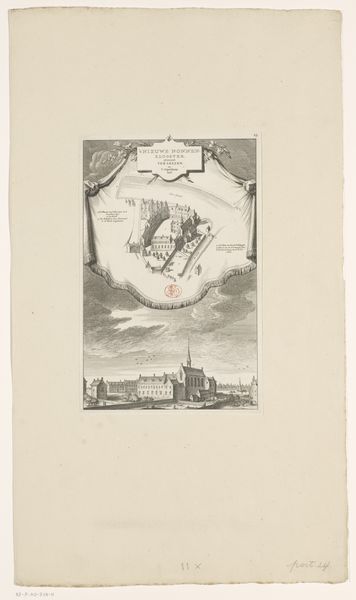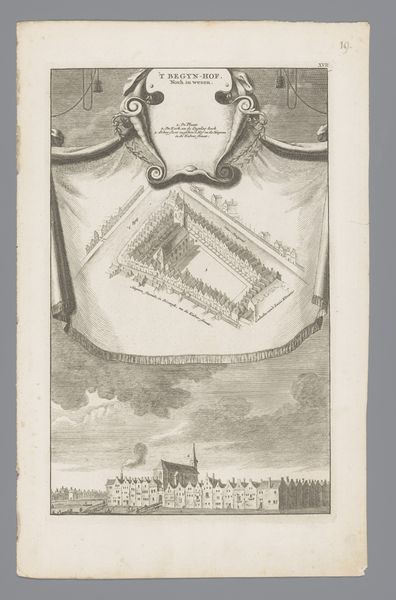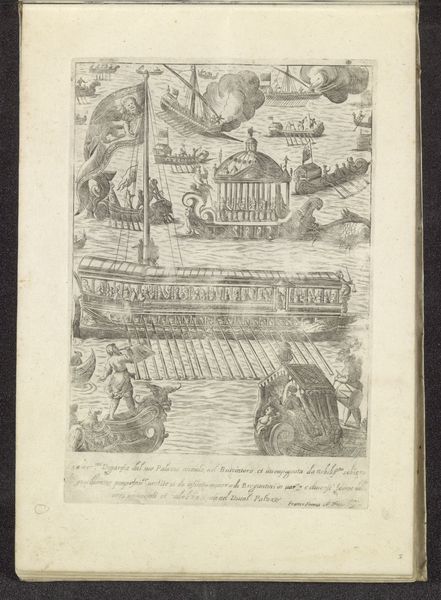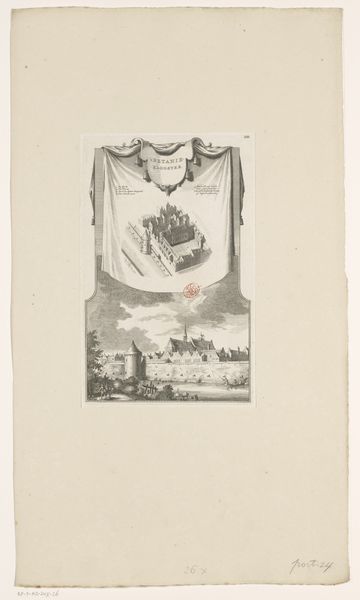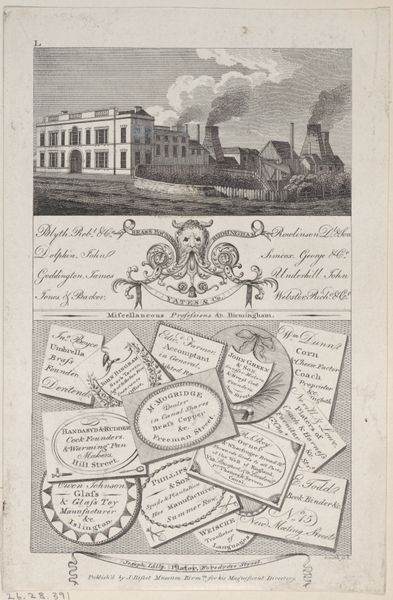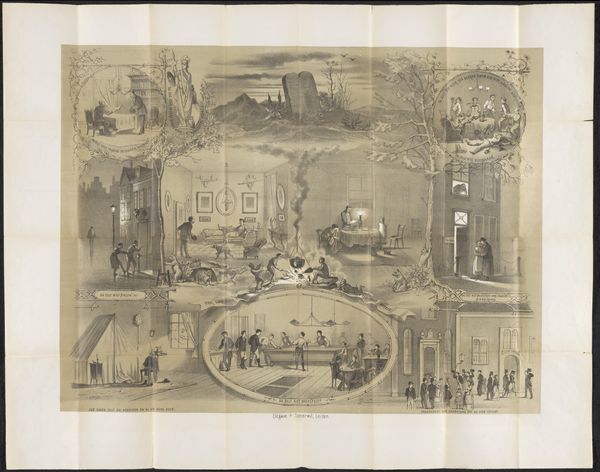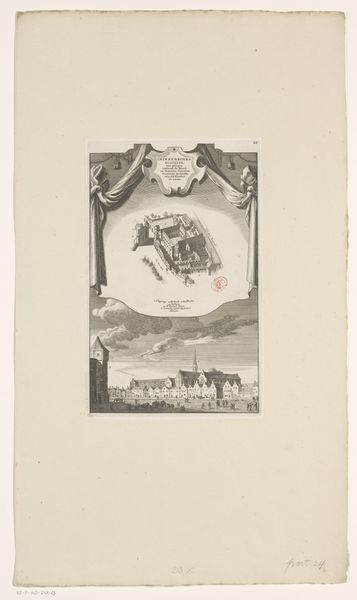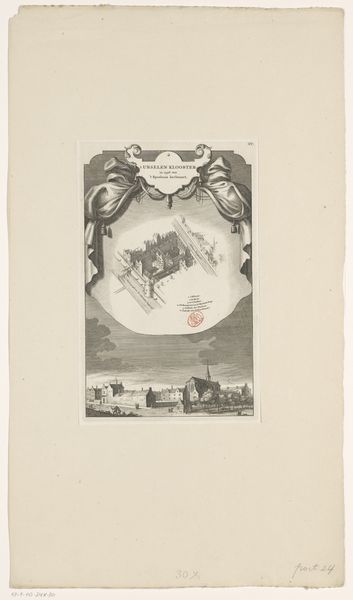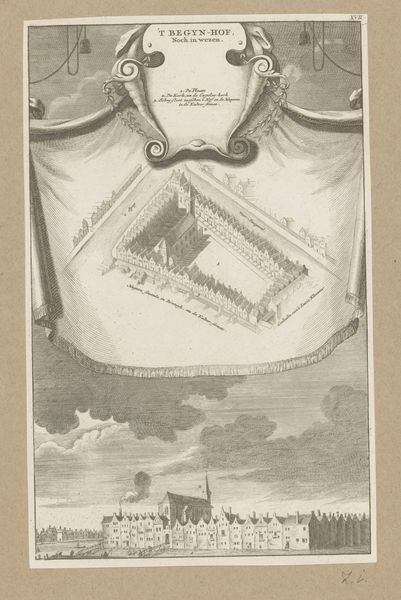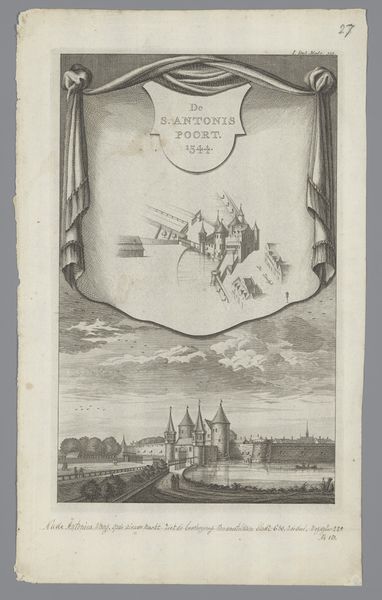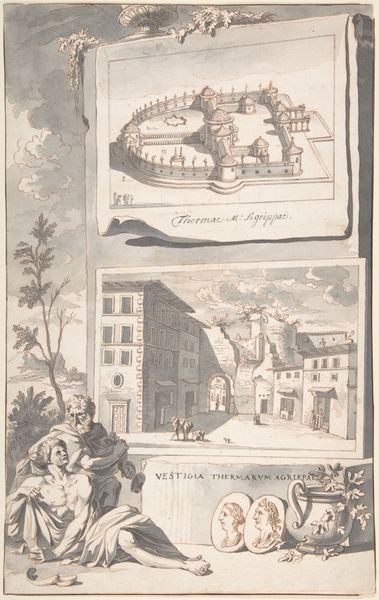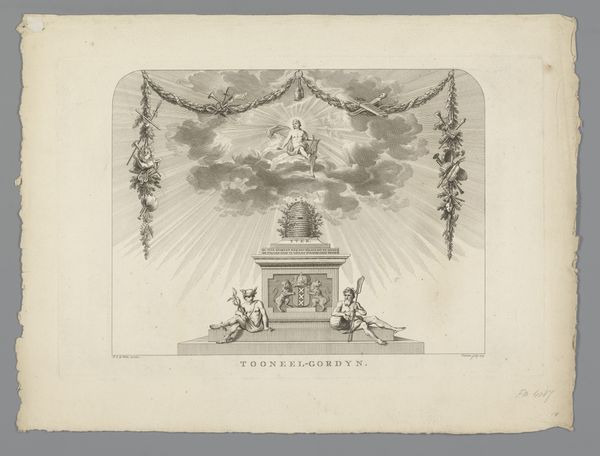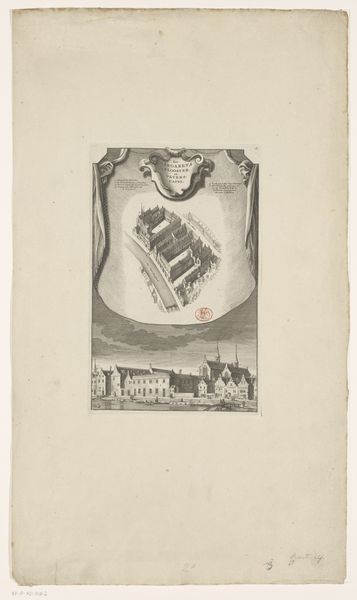
print, engraving
#
baroque
#
dutch-golden-age
# print
#
landscape
#
cityscape
#
engraving
Dimensions: height 270 mm, width 173 mm
Copyright: Rijks Museum: Open Domain
Editor: So this is "Gezichten op de Regulierspoort in Amsterdam" by Jan Goeree, from 1760. It's an engraving. It almost feels like two images in one, connected by this theatrical curtain... How should we read all the different views represented here? Curator: Notice how the artist uses the curtain, adorned with tassels, framing the map of 1544? It's a fascinating detail because curtains often signify revelation, a drawing back of a veil. What’s being revealed here, though? Editor: It's an older Amsterdam, a historic cartography juxtaposed with a more contemporary view below. It's like time is layered on the page. Curator: Precisely. Look at the windmill—an emblem of Dutch industry and ingenuity, situated in both scenes. This placement grounds us in a specific cultural identity, suggesting a continuous, evolving relationship with the landscape. The cityscape below shows growth and modernity, doesn't it? But what of the fortifications? Editor: They seem less prominent in the contemporary view. Curator: Indeed. Consider what that visual shift conveys about Amsterdam’s evolving priorities and the receding anxieties of defense. Does the image convey an emotional sentiment as well? Editor: There's a sense of progress, and also maybe nostalgia for a simpler, fortified past. The artist certainly captures an attitude of self-reflection of sorts. Curator: Well said! Symbols really allow us a look into past cultures, and they offer continuity between eras, whether Amsterdam of the 1500's or Amsterdam of 1760. Editor: I’ll never look at a curtain in a painting the same way again! Curator: Me neither. This makes me want to delve deeper into Amsterdam’s historic emblems and iconography.
Comments
No comments
Be the first to comment and join the conversation on the ultimate creative platform.
